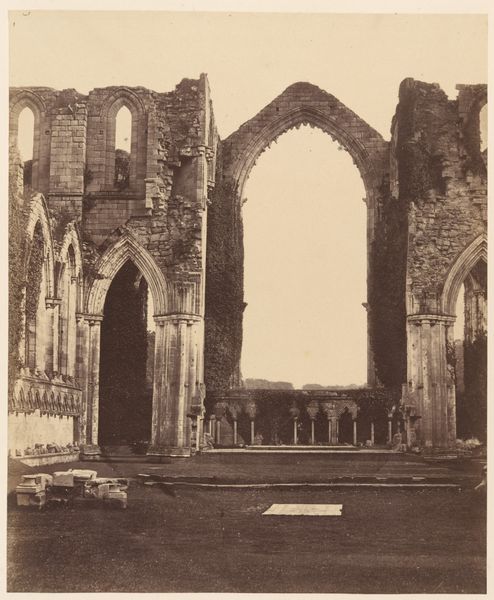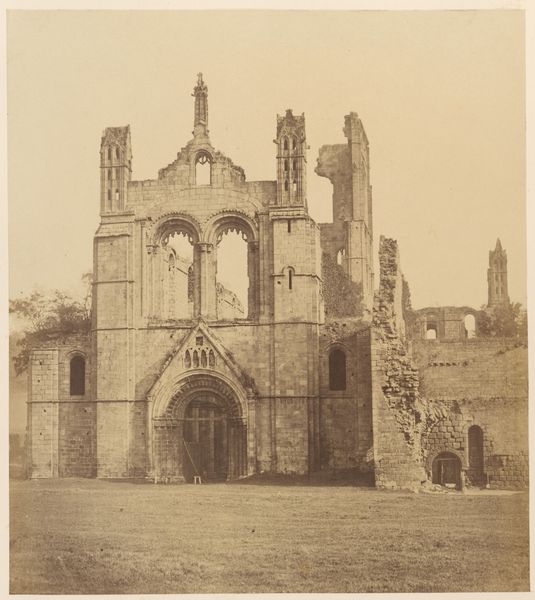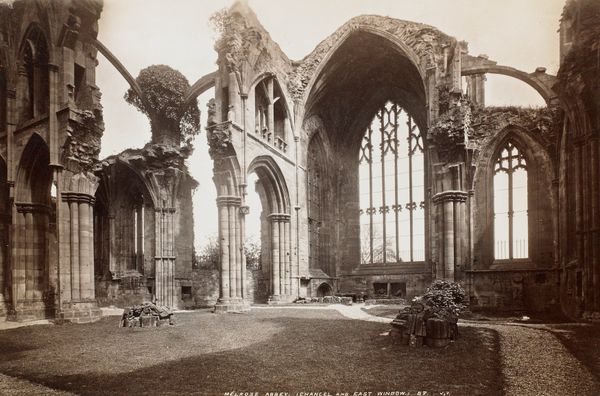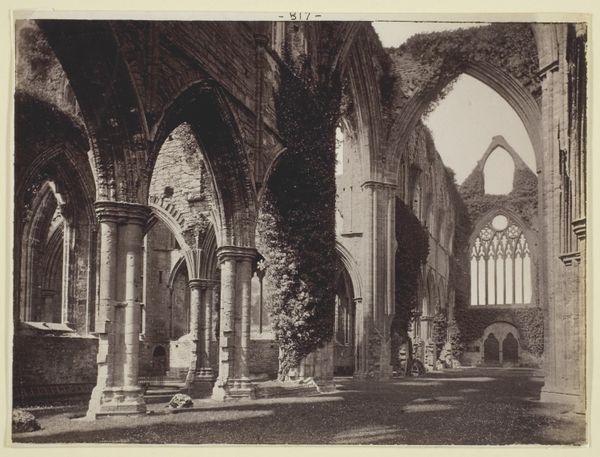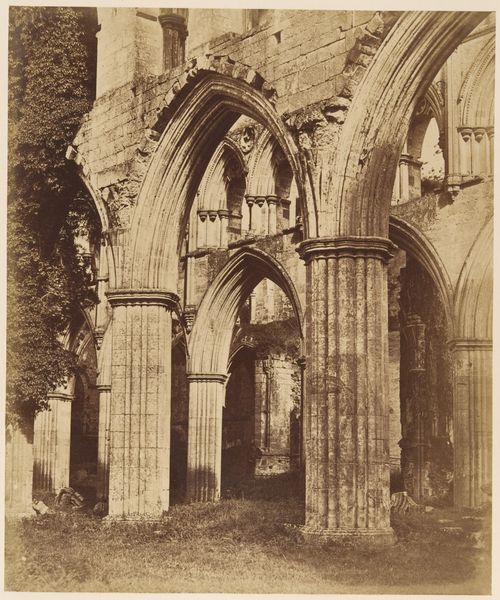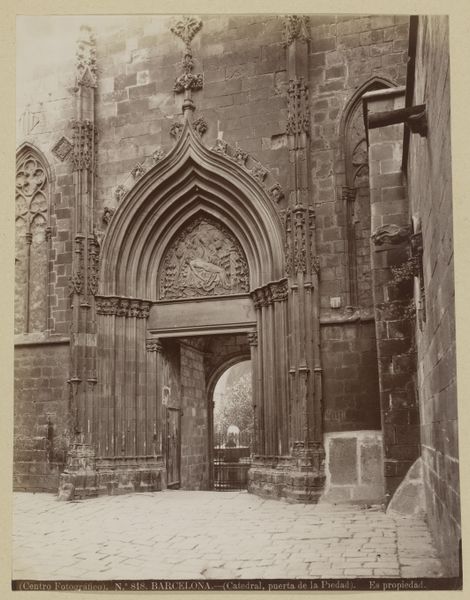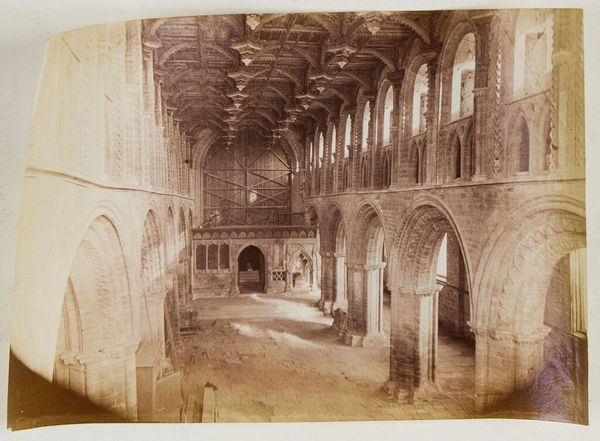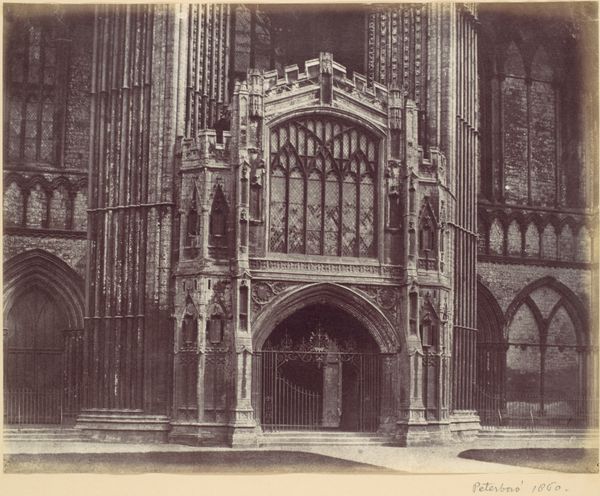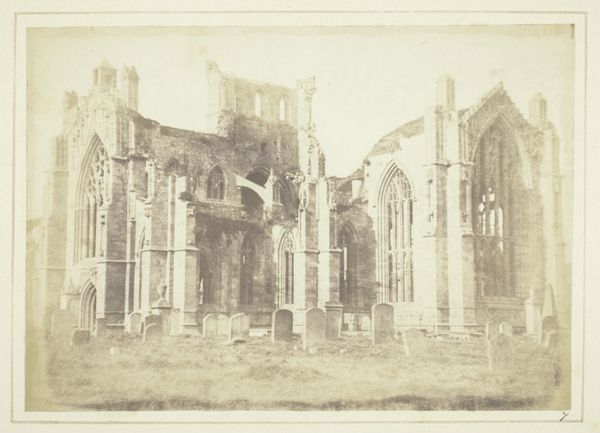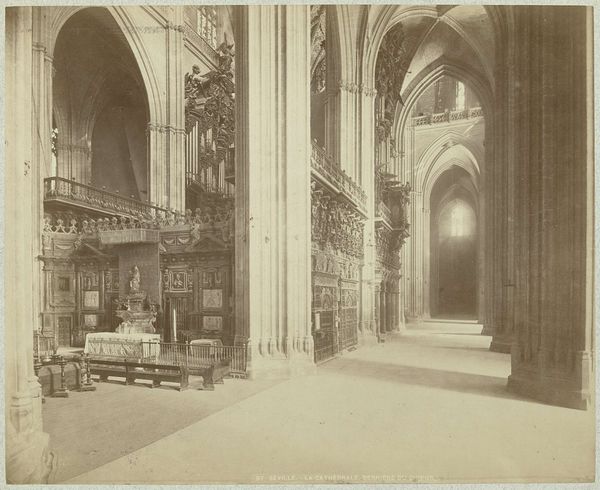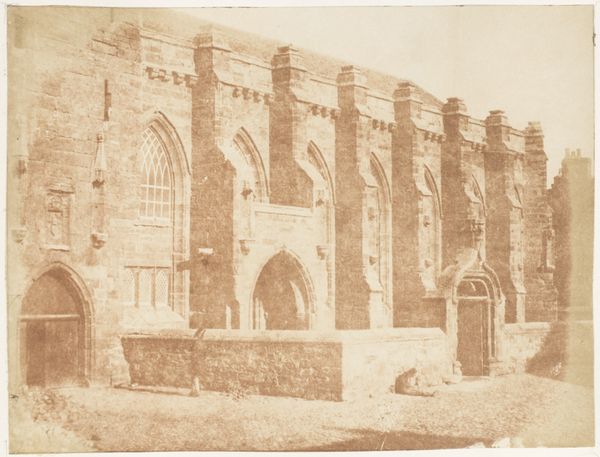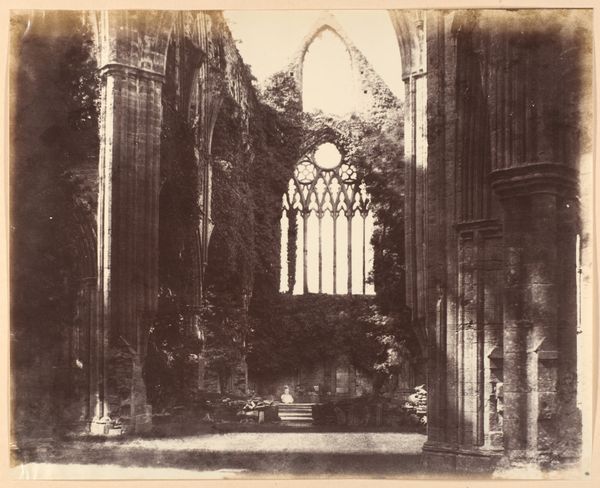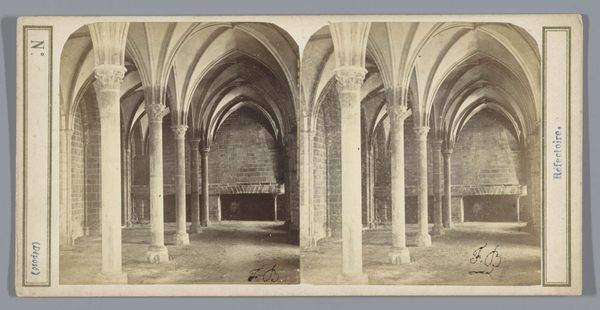
Ruïne van het middenschip van Holyrood Chapel in Edinburgh c. 1870 - 1890
0:00
0:00
Dimensions: height 132 mm, width 205 mm
Copyright: Rijks Museum: Open Domain
Editor: Here we have James Valentine's "Ruïne van het middenschip van Holyrood Chapel in Edinburgh," a gelatin silver print from somewhere between 1870 and 1890. The scale of the ruins is amazing – what strikes you most about this photograph? Curator: I immediately think of the social implications inherent in the photograph’s production. This gelatin silver print is a commodity, manufactured through industrial photographic processes and intended for mass consumption. Consider the labor involved – the quarrying of the stone, the original construction, and then the photographic reproduction and distribution. Editor: That's a perspective I hadn't considered. I was more focused on the Romantic aesthetic, the way the ruin itself evokes a sense of faded grandeur. Curator: But the ruin itself *is* a material object, subject to decay, its meaning constructed through social interaction and the act of photographic reproduction. How does the photograph transform the ruin from a physical structure into a symbolic representation and a saleable image? It highlights the relationship between material culture and image culture, doesn't it? Editor: So, the photograph isn't just about the past, but also about how that past is repackaged and consumed in the present. Are you saying that the image commodifies history? Curator: Exactly. The act of photographing and distributing it turns the historical ruin into a product for visual consumption. It also begs us to consider the Victorian era’s fascination with ruins, its own industrial advancement contrasted against historical decay. Editor: It's like the photograph itself becomes part of the story of material production and cultural consumption. Thanks, I'll never look at a photograph of a ruin the same way again! Curator: My pleasure. Thinking about these issues encourages us to think critically about how the things we see are constructed and circulated.
Comments
No comments
Be the first to comment and join the conversation on the ultimate creative platform.
